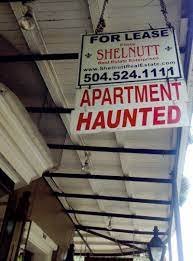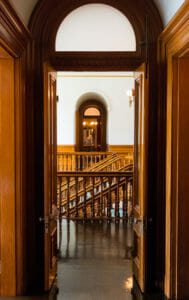What Happened on Box Hill – The Importance of Setting


When I first decided to set a murder mystery in the South, I knew it would have to be in Louisiana.
Granted, I was living in Louisiana at the time I began writing What Happened on Box Hill, so it was the most obvious muse for setting. Many drafts later, however, I stand by that choice. I now have spent more time in many locations in the American South, each with its own rich sense of character and history (Ashville, Charleston, Myrtle Beach, Mobile); nevertheless, Louisiana still feels like the right place for a mysterious murder to take place.
Perhaps that’s because, of all the Southern states, Louisiana is the most mysterious. It has all the quirks and charms and oddities of many of its Southern neighbors: the live oaks with their Spanish moss coverings; the friendly but clannish old timers with deep roots; the hurricanes, mosquitoes, and cockroaches; the delicious deep-fried food and Cajun spices; the tell-tale Bible belt churches on every corner and billboards about God and hellfire.
But Louisiana also has a particular flavor that sets it apart from the Alabamas and the Mississippis and the Georgias. It’s hard to name exactly what it is, but there’s a different undercurrent, a different rhythm. Sometimes it feels like magic. Sometimes it feels like danger. Unlike many of its Southern neighbors, Louisiana seems to be more in touch with its gumbo-crockpot mix of history. There’s the deeply American Southern Christian influence, but there are also those Haitian/Creole roots, and the two sometimes mesh, sometimes come into violent conflict with one another.
New Orleans might be the most obvious taste of this weird clash of cultures. The city is both a shameless consumerist tourist trap and a place where you might find genuine, honest-to-goodness magic, whether in the form of voodo/hoodoo or in the world-class musicians you can find in a dive bar or a random street corner. Good Catholic boys and girls drink until they’re sick on Mardi Gras and show up for service in Jackson Square on Ash Wednesday. It feels somehow like the most American city and like you’re stepping into an entirely different country at the same time. It’s a grownup Disneyland where you might just as easily buy a kitsch voodoo doll and post a picture of yourself drinking a giant hurricane on Bourbon Street or disappear in a back alley and turn up in a barrel in a bayou.
Ghosts populate the folklore of Louisiana, but they’re just as common in modern day. Property rental signs often advertise if a place is haunted or not as matter-of-factly as if declaring if it’s furnished or rent-controlled. Vampires, demons, werewolves, serial killers, Nicholas Cage—all are drawn to New Orleans as if it’s a vortex or a Hellmouth. Underneath the fun and the lights and the beads is the whisper of a threat—there is danger in this place.
What Happened on Box Hill isn’t set in New Orleans, but the ghost of the city hangs over the fictional town of Highbury. So does the spirit of New Orleans’s overlooked sister city, Baton Rouge. On the surface, Baton Rouge might seem like the more straight-laced of the pair, but the city has its own brushes with danger. According to The New York Times, Louisiana leads the nation with the highest murder rate, with homicides in Baton Rouge rising dramatically in the last few years. As reported in the Louisiana-based paper, The Advocate, Baton Rouge has also historically been connected to many serial killers; at one point, three active serial killers were on the prowl in the area at the same time, and D.C. Sniper John Allen Muhammad grew up in Baton Rouge and began his three-week killing spree in the same city before moving on to his more prolific crimes.
Another city that the novel makes brief reference to also has a legacy of murder: St. Francisville is home to Myrtles Plantation, said to be one of the most haunted places in the world. The home has a troubled history full of violent murder; the most well-known ghost, Chloe, was a slave who accidentally killed several members of the family before being brutally murdered for her crime.
So, yes, when it came to setting a murder mystery in the South, Louisiana felt like the right choice. When you think about it, the genre of a murder mystery has a lot in common with the seemingly contradictory Louisiana. Louisiana has two distinct sides: the patriotic, God-fearing, yes ma’am and apple pie American on the one hand; and the Mardis Gras, bead-throwing, one-too-many hurricanes on Bourbon Street, wild land of mystery on the other. You need the combination of these two warring sides for that uniquely Louisiana flavor to emerge.
A murder mystery, and especially a cozy murder mystery, also has two distinct sides to it. There is the sweet, funny, sometimes even zany cozy aspect to the mystery, where order is restored and the problem is always solved and the good and clever always prevail. But there is also that dark undercurrent, where the curtain is pulled back to reveal the danger in even the coziest of settings. No small town is without its secrets; no person can ever be entirely known; no one is ever truly safe. The two have to coexist for a cozy mystery to take shape, and it’s often in the tension between the two that you find the magic.
Learn more about Elizabeth Gilliland at www.bayouwolfpress.com. Want more author news? If so, click here to read my Behind the Story interviews from your favorite authors.
a Rafflecopter giveaway


Sounds like a great book.
Marilyn
Thank you for hosting me, Terry! I’ve enjoyed looking through your site and learning so much about some of the amazing places that have inspired you. I hope this post can do the same for someone else!